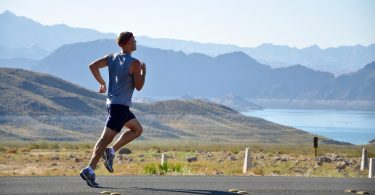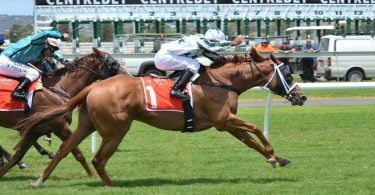The USA and Jamaica dominate the sprinting events with Usain Bolt undeniably the star of the show. So is it safe to assume that black athletes are naturally better at sprinting?
The USA and Jamaica dominate the sprinting events with Usain Bolt undeniably the star of the show. So is it safe to assume that black athletes are naturally better at sprinting?
The last non-black athlete to take Olympic gold was Alan Wells of Great Britain. That was 32 years ago. Since then athletes with African heritage have claimed every single 100m medal contested at the Olympic Games.
Heading into the London Olympics the only realistic non-black competitor is Christophe Lemaitre of France. He is currently the only white athlete in history to run sub 10 seconds. Despite this he is currently ranked 10th in the world meaning that on current form he would not even make the 100m final.
On the day of the opening ceremony, Lemaitre’s coach Pierre Carraz revealed that they “have put a definitive cross” against the 100m and will not compete unless there are significant withdrawals, a tactic they employed at the World Championships in Daegu. He will instead arrive on August 4th, the day the first 100m heat is held.
The fact that Lemaitre will not even contest the 100m illustrates the dominance of black athletes in this event. Assuming that their success is determined by their genes and is not a product of their environment; can we justify society’s long-held belief that black people are faster than white people?
Jimmy the Greek, famously fired from the CBS network in 1988 for his comments about African-American athletes being naturally superior, was a proponent of this theory. While both the wording and content of his statement was considered controversial at the time, the concept was recently investigated by American sprinter Michael Johnson in a televised documentary on Channel 4.
Unnatural Selection
In the documentary Johnson looks into the ancestry of African-American sprinters and found they share more in common than the colour of their skin. He found that he and many other sprinters are directly descended from slaves, brought to the Americas between the 16th and 19th century.
The transatlantic slave trade saw millions of African men, women and children taken from their homes and transported hundreds of miles to the coast with little food or water. Many perished through dehydration, exhaustion and physical torture by their captors.
Those who made it to the slave ships were then chained and tightly packed in hot, humid and unsanitised conditions, suffocating many. Those who were injured or became ill were tossed overboard. Invariably the living lay side by side with the dead.
Inadvertently this horrific human trafficking led to “unnatural selection”. Essentially those who survived the ordeal endured due to favourable physical characteristics.
The theory proposes that those with stronger immune systems survived the disease-ridden conditions. Those with more physical bulk would be more likely to survive physical beatings. Those more sensitive to testosterone or adrenaline may even have developed mutations in their own genes as a result of the highly stressful environment. All traits they could pass on to the next generation.
Selective Breeding
This concentrated gene pool was further modified by the slave owners. Rather than spending huge sums of money on new imported slaves (which became increasingly expensive) their plantation owners would single out individuals who were larger and considered stronger and forced them to produce offspring. One plantation actually listed 62 women as “breeding wenches” or “belly women” not the norm of cooks, cleaners or field workers.
Fascinatingly Dr. Herb Elliot provides an insight into the current dominance of Jamaican sprinting. While their rise has coincided with increased funding and a more scientific approach to training, he believes that slave trade routes played a factor in the current Jamaican success.
He reveals that Jamaican ports were often one of the last destinations on the slavers radar. The most obedient slaves were the most desired and therefore highly sought after. Slave revolts were common, resulting in several ships being sunk en-route to the Americas. The first colony on the US mainland actually succumbed to an uprising. Something the Europeans could not afford.
This left the toughest and most aggressive to arrive on Jamaican shores. Some reports suggest that 90% of today’s Jamaican population are descended from these “leftover” slaves. Whether their attributes are related to their genes or simply the enforced culture is subject to contentious debate.
Western Ideology
So on the face of it; we could accept the notion that black people are naturally better sprinters. However this statement is wholly false. If you were to pick a white and a black person at random the chances of the white person being significantly slower are extremely small.
By using the term “black” to stand in for “elite male sprinters”, society is treating this particular subsection of the entire black population interchangeably. This is where the issue lies.
Due to the fact that a larger proportion of sprinters are black and fewer are white, we attribute their success to our obvious differences, i.e. skin colour. The media has then inferred from this that because our skin colour varies, so must our genes. In fact being black or white does not designate us as a “genetic type”.
Similarly Kenyan’s have become synonymous with endurance events. At Beijing four years ago, Kenya won 14 medals in the endurance events. One commentator described distance running as a “Kenyan monopoly”.
In fact most of Kenya’s successful endurance athletes stem from a highland area known as the Great Rift Valley. This 4,000 mile gash rips through the heart of East Africa encompassing Ethiopia, Tanzania and Uganda as well as Kenya. Most importantly, it sits a lofty 1000m above sea level, rising in excess of 1700m in some areas.
Fred Hardy, a retired college track coach observed that 90% of elite Kenyan athletes are concentrated to 60 miles around the town of Eldoret. While this area may seem huge, bear in mind Kenya has an approximate total area of 224,080 square miles.
Altitude Acclimatisation
The elevation of this area varies from 2100m to 2700m. The atmosphere at this altitude is much thinner and has fewer molecules of oxygen per litre of air. This stimulates the body to produce more oxygen-carrying red blood cells to transport the limited oxygen supply around the body.
As there is less oxygen, breathing (ventilation) rates increase as does heart rate. This leads to high blood pressure in the lungs (pulmonary hypertension) which can increase the size of the left ventricle of the heart (ventricular hypertrophy). Essentially the heart becomes better at pumping blood around the body.
Anti-diuretic hormone (ADH) is secreted into the blood to help conserve water. This improved water retention prevents headaches and nausea and allows the brain to recruit all of the muscle fibres all of the time reducing the likelihood of decreased performance.
From the moment children are born here they have to adapt to these adverse conditions. Drop these runners to sea level where oxygen is abundant and they have a greater capacity to utilise oxygen, allowing them to run harder for longer.
As their hearts are stronger and more efficient they do not have to expend as much energy as other elite endurance athletes. This allows them to go up a gear when they need to as demonstrated by the bunching of athletes in the early stages of a 10km race and then the best runners injecting a faster pace in the latter stages of the race.
So in fact being Kenyan does not make you a good distance runner. However living within the Rift Valley region does increase the likelihood that you will be better at endurance events. This is evidenced by many American and European athletes mimicking their training regimen and living at altitude.
Perhaps it should be renamed the Rift Valley monopoly.
Mo Farah has replicated these methods and reaped his rewards. He won gold in the 10km and is looking to do the same in the 5km track event at London 2012 after disappointment at Beijing four years ago.
Genetics
So is there a genetic difference unrelated to skin colour. A lot has been written about the ACTN3 (alpha-actinin skeletal muscle isoform 3) gene. The non-mutant version is associated with sprint performance whereas the mutant gene is linked with endurance. Approximately 18% of all healthy white individuals lack a functional ACTN3 gene.
The absence of this gene and subsequent protein does result in a disease population as it’s cousin ACTN2 is similar in both structure and function (highly homologous). However, the vast majority of the world’s population have the ACTN3, suggesting that it may perform some extra function.
Both male and female elite sprint athletes express the non-mutant ACTN3 more often than the average population, suggesting that the presence of ACTN3 has a beneficial effect on generating forceful contractions at high velocity, providing an “evolutionary advantage”.
However elite female sprinters exhibited more of the mutant (endurance) gene than was anticipated. Likewise elite female endurance athletes had fewer than expected numbers of the mutant (endurance) gene. The male frequency was within expected limits. This indicates that the ACTN3 gene affects athletic performance differently in males and females, implying other variables are also a factor.
The fact that the polymorphism (variation in expressed genes) exists is testament to the human race’s ability to not only adapt to new environments but to thrive in them. Let us hope that we can continue to appreciate and celebrate our differences and diversity, as this is what makes the Olympics such a special occasion.








